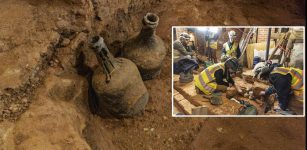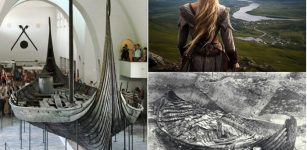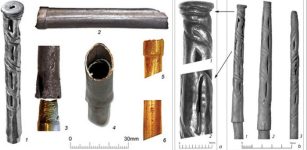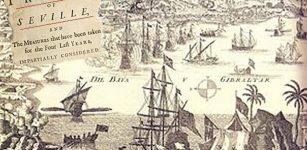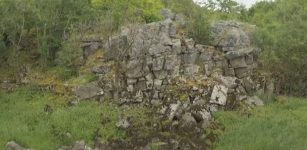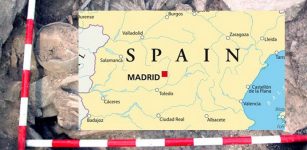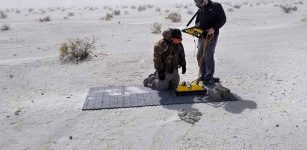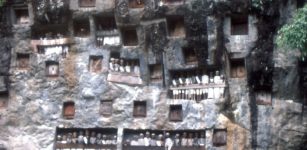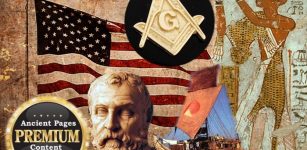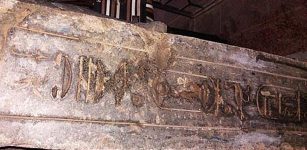1,000 Ancient Sealings Linked To Graeco-Roman Pantheon Among Finds In Unidentified Church In Turkey
Conny Waters - AncientPages.com - More than 1,000 ancient sealings related to the Graeco-Roman pantheon have been discovered in a late antique building complex, which could be an unidentified church.
The discovery was made by archaeologists from the Cluster of Excellence “Religion and Politics” of the University of Münster who conducted excavations in south-west Turkey.
“This unique group of artifacts comprising more than 1,000 pieces from the municipal archive of the ancient city of Doliche gives many insights into the local Graeco-Roman pantheon – from Zeus to Hera to Iuppiter Dolichenus, who turned into one of the most important Roman deities from this site”, director Prof. Dr. Engelbert Winter from the Cluster of Excellence explained at the end of the excavation season.
“The fact that administrative authorities sealed hundreds of documents with the images of gods shows how strongly religious beliefs shaped everyday life.
"The cult of Iuppiter Dolichenus did not only take place in the nearby central temple, but also left its mark on urban life”, says Prof Winter. “It also becomes apparent how strongly Iuppiter Dolichenus, originally worshiped at this location, was connected with the entire Roman Empire in the 2nd and 3rd centuries AD: many of the images show the god shaking hands with various Roman emperors.”
“Under a mosaic dated to 400 AD within a complex of buildings, we were able to uncover an even older mosaic floor of equally high quality”, Prof. Winter explains. Image credit: Peter Jülich
The excavation team has been exploring the temple of the soldier god Iuppiter Dolichenus for 17 years. This year, the team focused on the urban area and unearthed the public center of the city of Doliche.
“Under a mosaic dated to 400 AD within a complex of buildings, we were able to uncover an even older mosaic floor of equally high quality”, Prof. Winter explains. “According to the present findings, there is much evidence of a late antique church. This could turn out to be an important contribution to understanding the history of early Christianity in this region.”
The excavations in the building complex started in 2015 and up to now, archaeologists have uncovered 150 square meters of the large central nave bordered by columns.
Mosaic floor of a late antique church in Doliche. © Forschungsstelle Asia Minor
“Apart from the architecture, small finds from the surrounding area also point to the existence of a church, such as the fragments of a marble table or the mentioning of a deacon attested by an inscription,” prof. Winter explained.
Excavations also revealed a public bath from the Roman Iron Age with well-preserved mosaics. Any Roman thermal baths have not been known in the region, so the discovery is of great importance. Additionally, an intensive survey was carried out this year on the settlement hill of the ancient city, Keber Tepe and a large number of finds from the Stone Age indicate that Keber Tepe was obviously an extremely important place very early on. Doliche reached its greatest extent later, in the Roman and early Byzantine periods.
Regarding the large number of discovered sealings, Prof. Winter said that “many sealings can be attributed to the administrative or official seals of the city due to their size, frequent occurrence, and in some cases also due to inscriptions.
"In addition to the images of the 'city goddess' Tyche, the depictions of Augustus and Dea Roma deserve special attention, since they point to the important role of the Roman emperor and the personified goddess of the Roman state for the town of Doliche, which lies on the eastern border of the Roman Empire.

Jupiter Dolichenus as a Roman commander, but with the standard weapons of the god: a double-axe in his right hand, and a lightning bolt in his left. From Carnuntum, early 3rd-century. Image via wikipedia
However, the central motif is the most important god of the city, Iuppiter Dolichenus.
In the 2nd and 3rd centuries AD, his cult spread into large parts of the Mediterranean world, extending as far as Britain”, explains Prof. Winter. Therefore, it is not surprising that hundreds of documents were sealed with images showing a handshake between this deity and an emperor. “It was a sign of the god's affinity to the Roman state.”
The images also provide insights into the cult itself. In addition to sealings showing busts of Iuppiter and his wife Iuno, there are depictions of the divine twins Castor and Pollux, the sons of Zeus. “The sons of Zeus, also known as Dioscuri or Castores Dolicheni, are often portrayed as companions of Iuppiter and therefore play an important role in the cult.”
Original story - here.
Written by Conny Waters - AncientPages.com Staff Writer





